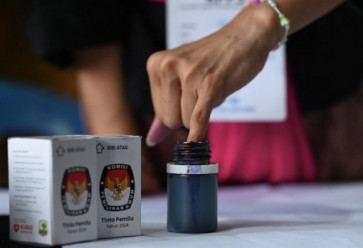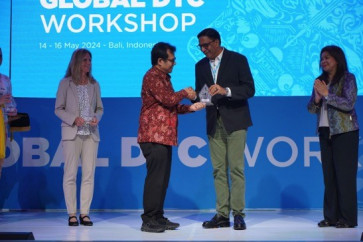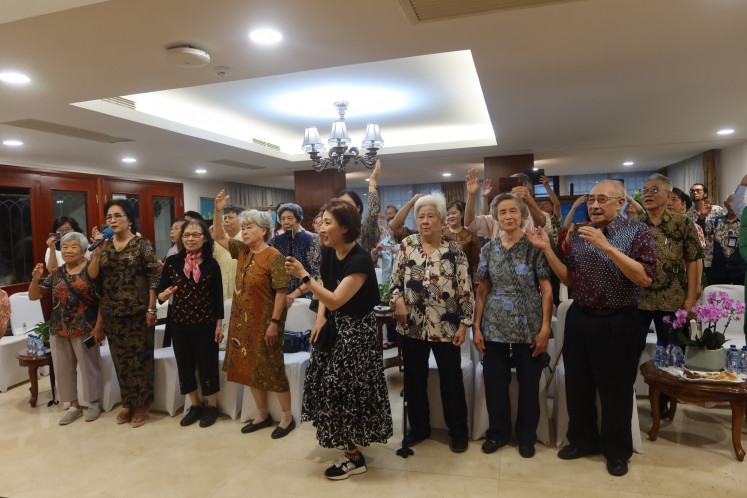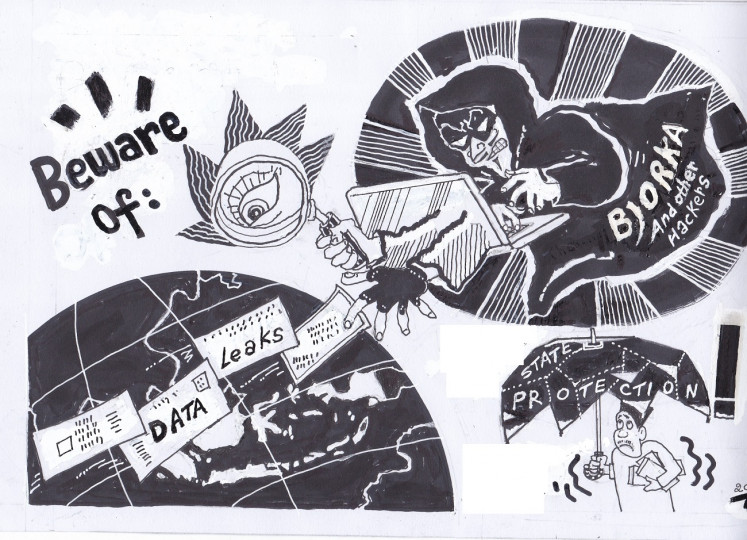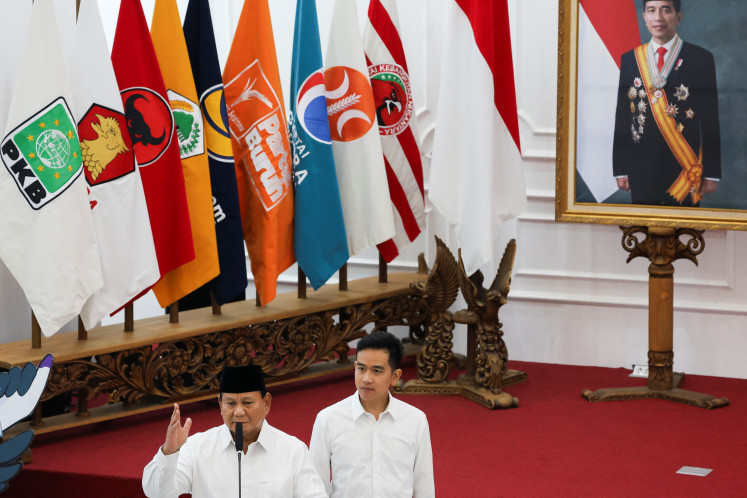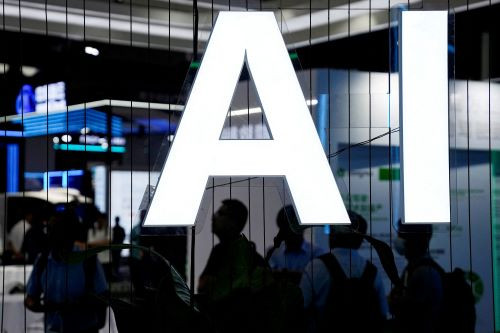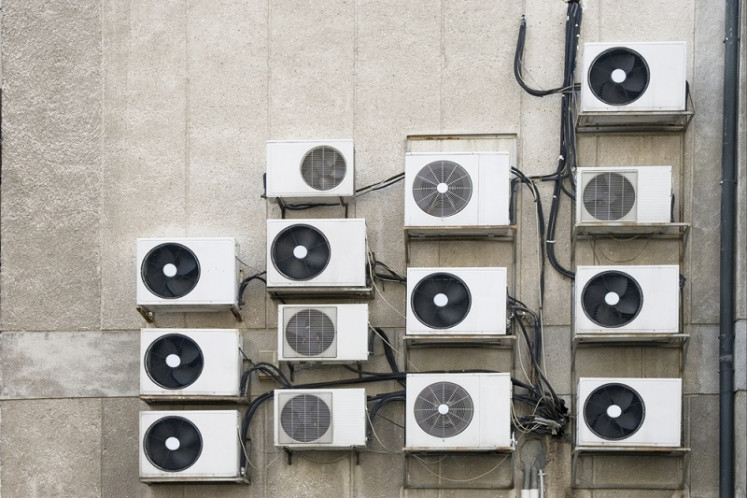Analysis: Govt to ease requirements for electric motorcycle subsidy
The Indonesian government’s subsidy program for electric motorcycles has faced a slow uptake since it was first introduced on March 20. It is a blow to what was aimed to speed up the mass adoption of electric vehicles (EVs) in the country.
Change Size
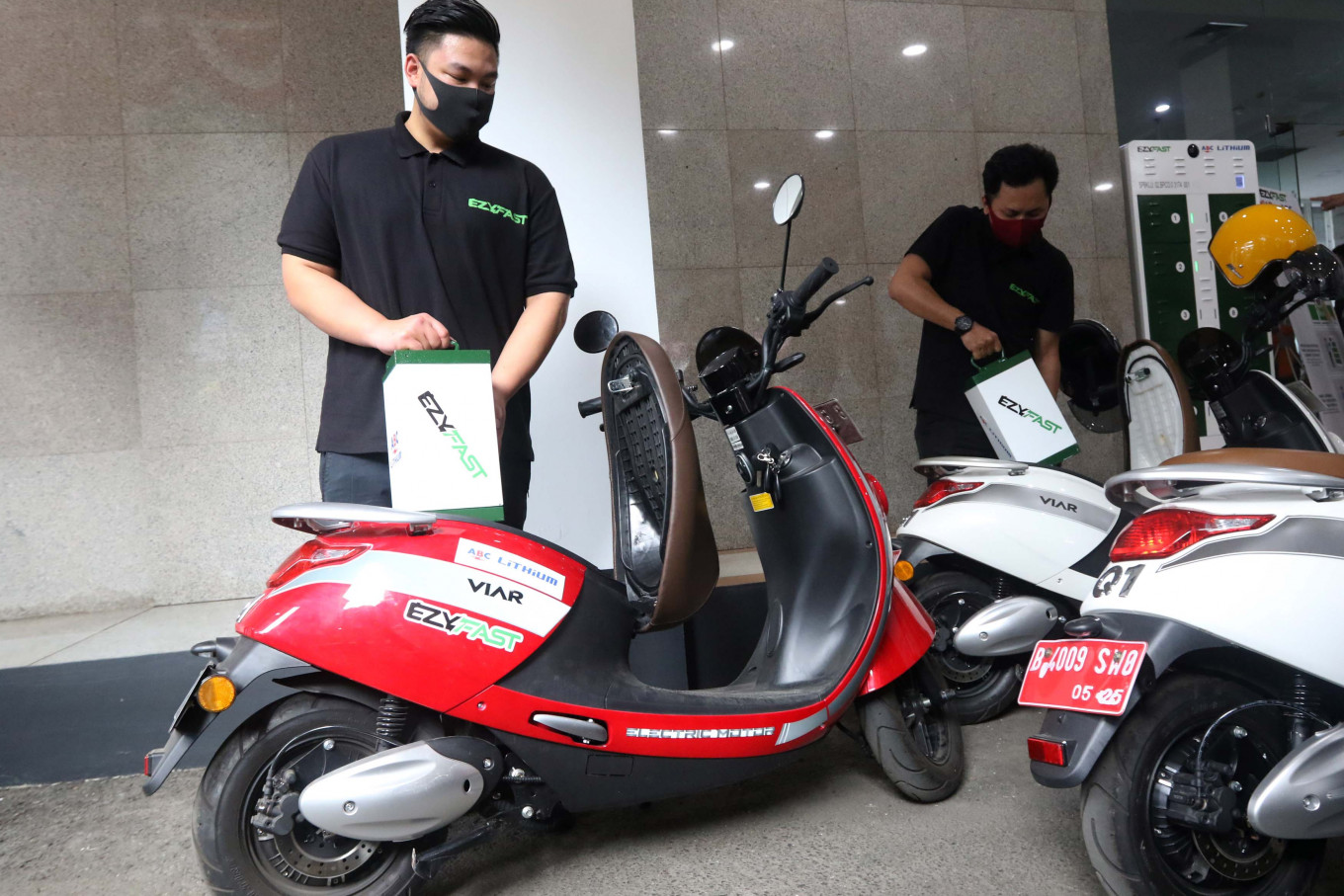 Officers exchange electric motorcycle batteries at Public Electric Vehicle Battery Exchange Station (SPBKLU) in Electrification Director General building, Jakarta, on Monday, August 31, 2020. The testing of battery exchange devices was conducted to encourage people to choose electric vehicles than oil-powered motorcycle and it is hoped that many private companies will support the establishment of SPBKLU so it can be installed in many places across the town. (JP/Dhoni Setiawan/Adi/Dyn)
Officers exchange electric motorcycle batteries at Public Electric Vehicle Battery Exchange Station (SPBKLU) in Electrification Director General building, Jakarta, on Monday, August 31, 2020. The testing of battery exchange devices was conducted to encourage people to choose electric vehicles than oil-powered motorcycle and it is hoped that many private companies will support the establishment of SPBKLU so it can be installed in many places across the town. (JP/Dhoni Setiawan/Adi/Dyn)
T
he Indonesian government’s subsidy program for electric motorcycles has faced a slow uptake since it was first introduced on March 20. It is a blow to what was aimed to speed up the mass adoption of electric vehicles (EVs) in the country. Now, the government is looking to revise the program’s scheme to get it back on track.
Previously, Industry Minister Agus Gumiwang Kartasismita announced that the subsidies would cover the purchase of 200,000 new electric motorcycles and the conversion of 50,000 conventional two-wheelers to electric ones until the end of the year. Each electric motorcycle purchase or conversion would receive assistance amounting to Rp 7 million (US$467), with Rp 1.75 trillion in supporting funds from the Finance Ministry.
However, the government subsidy has developed less than expected, with the Industry Ministry admitting that only a handful of people were willing to take advantage of it. As of Aug. 2, data from SISAPIRa, the government website used to monitor the subsidy realization, showed that 1,207 people had registered for the subsidy with another 200 people already verified but have yet to acquire the assistance.
Additional setbacks also occurred in the subsidy’s initiation as the program did not become effective until May 10, despite being scheduled for implementation on March 20. PT Surveyor Indonesia commercial director Saifuddin Wijaya explained that obstacles were found in the verification process for the electric motorcycle manufacturers’ factories as well as the electric motorcycle dealers’ processes in adapting the program.
The slow uptake has been caused in part by the various limitations imposed by the government. The subsidy, expected to run until 2024, had only been available to selected groups of people, namely recipients of small-and-micro enterprise (SME) business credit (KUR), micro business productive assistance (BPUM), wage subsidy assistance and electricity subsidies. Particular attention had been placed on lower-income earners as the government wanted to ensure fairness in terms of the subsidy’s beneficiaries. Agus mentioned that, as a result, sales of the subsidized electric motorcycles were limited.
As an evaluation of the subsidy program is underway, a limited ministerial meeting with President Joko “Jokowi” Widodo on July 31 resulted in the decision to remove the subsidy’s beneficiary eligibility requirements. Following the meeting, Agus explained that a new and simplified requirement will take effect, allowing one citizenship identification number (NIK) or ID card (KTP) to purchase only one electric motorcycle. This change will allow the subsidy program accessible to the public.
Efforts to accelerate the development of the EV ecosystem in Indonesia are not only limited to the electric motorcycle subsidy program. Minister Agus said the government would also introduce a new policy to attract adoption of electric cars by waiving the value-added tax on completely built imported electric cars. The government will also push back the implementation of local content requirement (TKDN) for electric cars to woo more EV investors to invest in Indonesia.
What’s more
Based on Presidential Regulation No. 55/2019, electric motorcycles are expected to meet a minimum of 60 percent TKDN in 2024, while electric cars are required to meet a minimum of 40 percent TKDN in 2024. Minister Agus announced the government’s plan to relax the regulation. With this relaxation, the 40 percent TKDN for electric cars is pushed back to 2026.
Regarding electric cars, Industry Minister Agus Gumiwang Kartasismita mentioned that after 2026, the TKDN requirement for electric cars would be raised to 60 percent. Despite the easing of the TKDN-related regulation, Agus believes achieving the 40 percent TKDN for electric cars may happen sooner than 2026, as an increasing number of manufacturers are committed to starting EV battery production activities in Indonesia next year. Taking on the example of Hyundai, Agus mentioned that the company is committed to investing up to Rp 22 trillion to build an electric car battery factory in the country.
Meanwhile, the TKDN for electric motorcycles will be evaluated following an assessment of the subsidy program’s sales performance. Only electric motorcycles with at least 40 percent of TKDN have been eligible for purchase under this program. Currently four electric motorcycle manufacturers are listed in the subsidy program, namely PT Volta Indonesia Semesta, PT Selis Retail Indonesia and PT Gesits Bali Pratama.
What we’ve heard
Several sources within the government have said that the lack of investment in the electric vehicle (EV) ecosystem is behind the government’s repeated changes to regulations in that sector. One of the most recent changes were incentives for establishing public EV charging stations (SPKLU). According to one entrepreneur, concerns about investment certainty in the SPKLU sector have already been brought to the government, including to the Ministry of Energy and Mineral Resources (Kementerian ESDM).
Another source mentioned that because of lobbying efforts by potential SPKLU investors, the government finally agreed to impose fees for charging EVs based on whether fast or ultra-fast charging technology was used. With these incentives, the government hopes that entrepreneurs will be more interested in investing in SPKLU stations, which would subsequently accelerate return on investments.
However, another source at the state-owned electricity company (PLN) mentioned that the majority of vehicle owners (80 percent) are predicted to charge their vehicles at home.
Another source pointed out that the government has had a flawed approach in developing the EV ecosystem, stating that subsidies should have been provided for the broader population to promote adoption. Instead, the government chose to prioritize the manufacturers and business owners, leading to a supply surplus.
Recently, the government implemented four criteria for obtaining incentives for purchasing electric motorcycles. However, out of an estimated 200,000 EVs, only 36 electric motorcycles have received the incentives.
Apparently, micro, small and medium-sized enterprises (MSMEs) entrepreneurs are not interested in buying electric motorcycles. In the eyes of MSME entrepreneurs, electric motorcycles are too expensive. They see electric motorcycles as a tertiary need and do not consider them necessary. "It's already difficult to pay for electricity, why should we buy electric motorcycles?" said one UMKM entrepreneur. Another problem is the complicated requirements and lengthy process of applying for incentives, which cause the majority of potential consumers to withdraw their applications.
"This erroneous policy is because the government listens too much to the interests of the manufacturers," said another source. Moreover, there are also many "freeloaders" in the industry who want special treatment.
Therefore, specifically for electric motorcycles, the government has expanded the scope of incentives to the general public, whereas previously it was only available to specific groups.
Additionally, potential investors also complain that the government lacks a clear roadmap for renewable energy and electrification in Indonesia. Some issues that were pointed out are insufficient infrastructure readiness and low local content requirements (TKDN). Additionally, there is uncertainty about the post-sale network scheme.
Disclaimer
This content is provided by Tenggara Strategics in collaboration with The Jakarta Post to serve the latest comprehensive and reliable analysis on Indonesia’s political and business landscape. Access the latest edition of Tenggara Backgrounder to read the articles listed below:
Politics
- KPK, TNI spat sheds light on military impunity
- Powerful women an afterthought in VP nominations
- Cak Imin’s maneuvers leverage PKB’s political weight
- Supreme Court says no to interfaith marriages
Business and Economy
- RI, China reach deals on investments, including IKN, after Jokowi’s visit
- Regulation finally issued, forcing exporters to keep their forex onshore
- Tax collection hurdles lead to slowing tax revenue growth



